As someone who grew up gaming in the 90s I suffer from a rare aliment in which I need to play a bright colourful 3D platformer at least once every six months or I’ll descend into a depressive state that only rum soaked gummy bears can cure.
Needless to say, if I didn’t own a WiiU I would have been reaching straight for the Morgan’s and Gold Bears several months ago. For PS4 owners it’s been slim picking thus far, there was Kack, sorry Knack, and the LEGO games to tide you over, but that’s about it.
So when I heard that Mimmi’s PS1/2 era inspired platformer; The Last Tinker: City of Colours was getting a PS4 release, I decided to put off my trip to the offee for bears and booze and stay at home and downloaded the closest thing we’ll see to a new [insert name of your favourite 3D platformer published by Sony or developed by Rare here] fpr the foreseeable future instead.
In the Last Tinker you play as Kuro – cheerful monkey chap and the titular Last Tinker One of a colour coded cast of anthropomorphised animals living in a faux papercraft allegory of racial tension and apartheid called Colour Town. Initially Colour town was wonderful place to live where the peoples of its three districts all worked together creating colours to export to the Dulux Kingdom,
However, now the red, blue and green citizens of the three districts that make up Colour Town no longer associate with each other and as such all colour production has ceased. What started out as a minor disagreement over which was the best colour, turned to distrust and eventually complete segregation as each district gave into their negative qualities along with the guardian spirits that ruled over them. Those living in the Red District became aggressive and full of rage, the denizens of the Green District became fearful and insular and the citizens of the Blue District fell into a deep depression.
As a result of the troubles, the purple spirit, the town’s former symbol of unity is swiftly forgotten. Alone and dejected, Purple decides that the only way to solve Colour Town’s problems is to destroy it and start again using the power of The Bleakness to drain all the colour and life from the town.
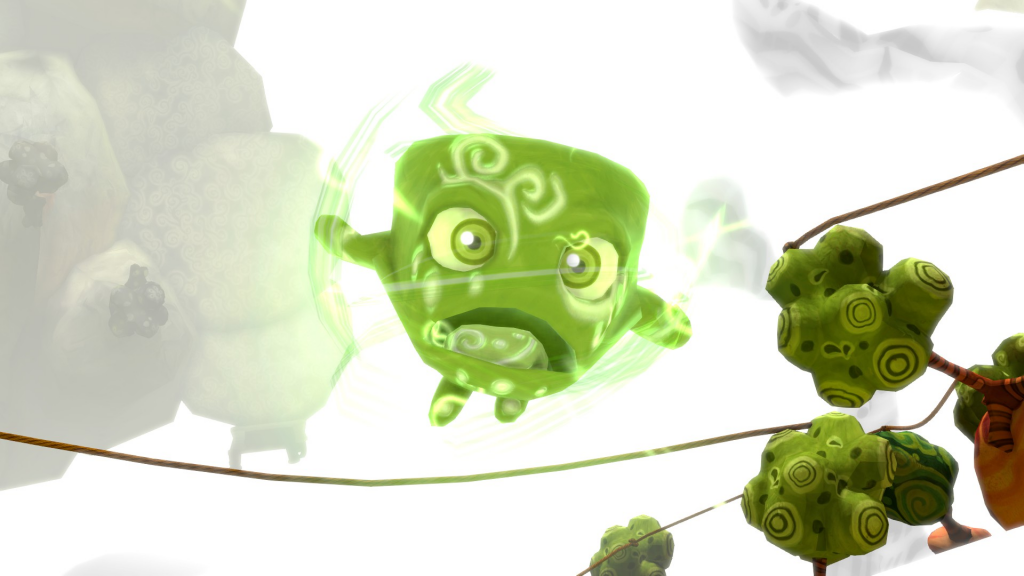
However, only a tinker with the ability to harness the power of colour can do this. After Koru’s best friend Tap is hurt in an altercation with a group of angry red citizens, Purple tricks Koru into unleashing The Bleakness in return for healing Tap and all hell breaks loose.
Thus, it’s up to Koru, to rectify the damage he’s done and put a stop to the purple spirit’s crazed machinations by harnessing the power of the colour spirits and unite the populace of in order to push back the bleakness and save Colour Town.
On the surface, The last Tinker looks like a cheery throwback to the golden age of 3D platformers in the vein of Banjoe Kazooie, Ratchet and Clank or Jak and Daxter. It’s set in a set in a vibrant interconnected world populated by a charming cast of anthropomorphized lizards, bears and bunnies, but once you pick up the pad and start playing it quickly becomes apparent that beneath its cuddly exterior The Last Tinker has just as much in common with the likes of Assassins Creed and the Arkham games, as it does with the early work of Rare, Insomniac and Naughty Dog,.
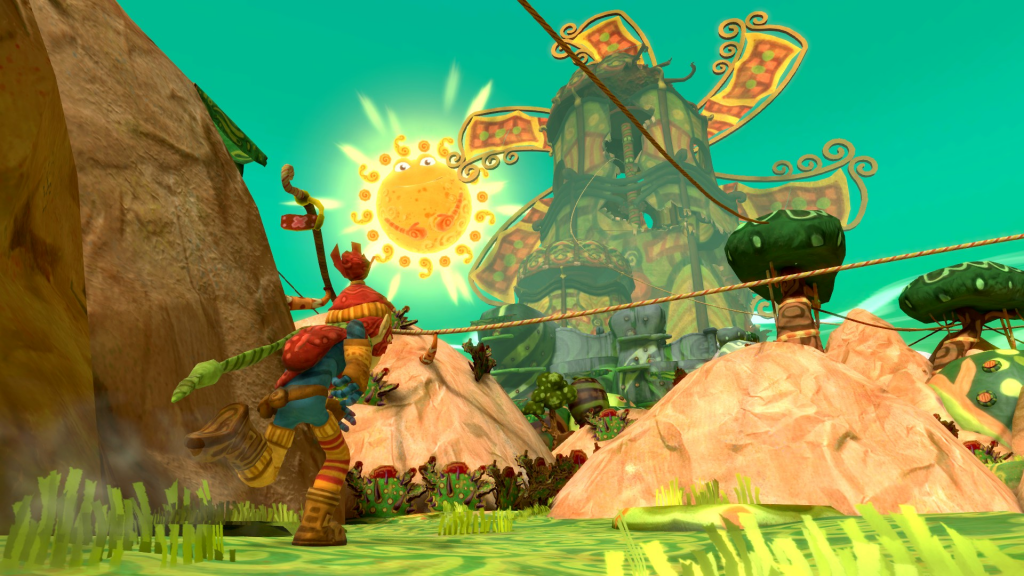
For a start the game has no jump button. Instead all of your running and climbing and parkour inspired clambering up is handled by holding R2 and scarping towards whatever you want to traverse in a similar manner to a certain series of historical stabbing sims. This makes traversing complex sections of terrain an absolute breeze for the best part, but also adds an extra element of cinematic flair to the proceedings as Koru, swings and leaps his way around the environment. Although you don’t have to worry about making each jump, correctly timing your runs is still a vital in order to avoid various mechanical traps and pitfalls, in particular giant tentacles of pissed off looking octopi that Koru has to traverse in the game’s numerous water sections.
In the later stages of the game you’ll also gain the ability to freeze time in order to traverse series of boxes before they all swiftly sink into a harbour and keep certain platforms in place in order for you to get to certain areas in one piece However, these instances can be counted on one hand.
Rather than the usual flailing of most platformers the Last Tinkers melee combat is surprising tight, feeling very much like a cross between Arkham Asylum’s rhythm based button bashing and Fables II’s single button attack strings. You have three basic attacks each tied to a colour: red is your basic attack, green makes enemies run away and blue stuns them, leaving them open to an instant kill attack from behind. R1 and a direction dodge out the way of incoming attacks telescoped by a big exclamation point above an enemies head.
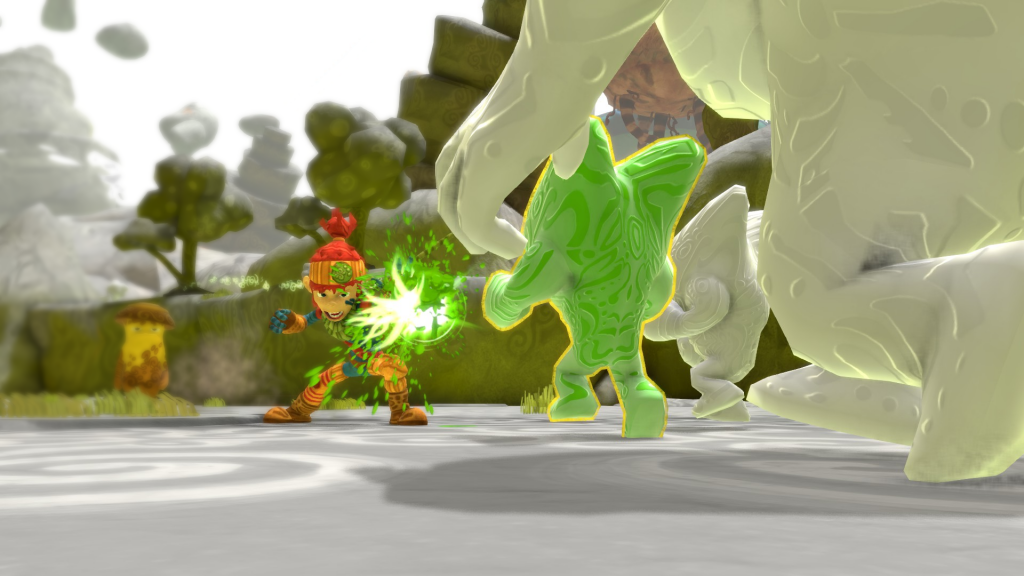
It starts out relatively challenging when all you can do is dodge and punch, however on normal difficulty once you get the power to stun enemies every encounter is a s simple as dispatching the little enemies as quickly as possible and then a quick green, blue, red combo takes care of even the most aggressive of foes. To its credit though the game does feature a nice varied cast of baddies to thump, with new monsters added to the mix at a fairly steady rate so that although the combat remains fairly simple it, never feels stale.
The game also features an arbitrary upgrade system, with new abilities and upgrades purchased via vending machines once you’ve collected enough gems scattered throughout the game world and dropped by fallen enemies. For the best part though none of them really make a huge difference within the game, besides the health upgrades, the rest are simply means to extend the use of your specials, which last long enough to kill everything in sight to begin with anyway. The game’s liberal use fo checkpoints and infinite continues even make health upgrades feel a little hollow because in the unlikely event you do get knocked out in combat or fall off a cliff, you can always try again and you’ll probably respawn right next to where you died anyway.
As well as the aforementioned gems, scattered throughout the world just off the beaten path in various nooks and crannies are gold paintbrushes. These unlock concept art as well as all kinds of fun retro ‘cheat’ modes like big head mode as well as various filters that make the game black and white or sepia if you’re feeling fancy. They’re completely optional, don’t affect gameplay at all but offer a fun call back to a simpler times when seeing Pierce Brosnan’s engorged head was a source of endless joy.
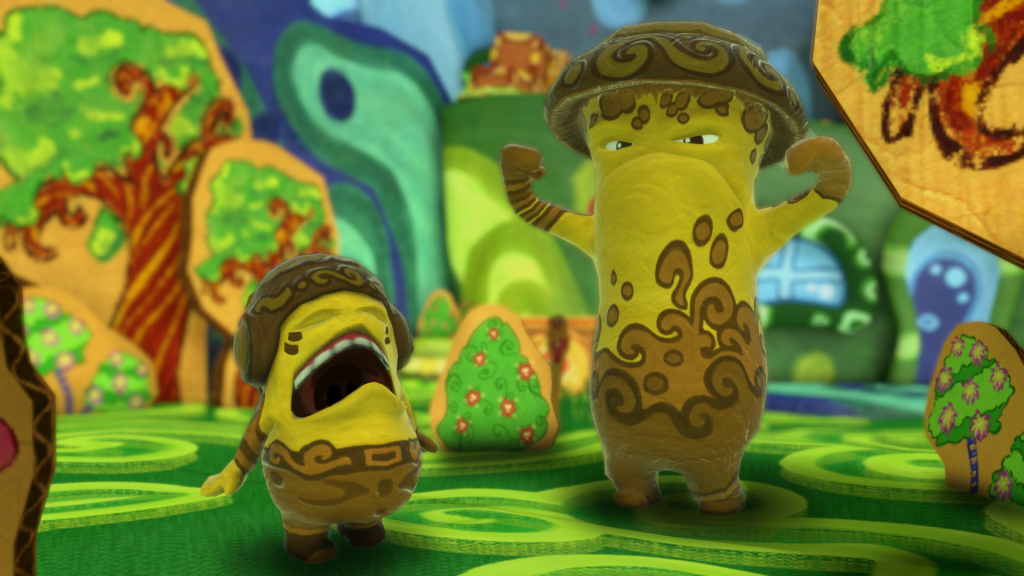
The highlight of the game for me though was the puzzle sections featuring Koru’s retarded mushroom buddies: Bigs and Bomber Pressing L1 will summon them to your side and by holding button down the adorably dopey mushroom men will follow you.
Hitting either of them with the game’s colour powers affects each of them in different ways and are used to overcome various obstacles. Red makes Bigs stomp on switches and Bomber explodes in order to clear rocks. Green lets you ride Bigs, desperately hanging on whilst as he runs screaming through barriers made of bleakness and trampling anything that gets in your way, whilst, Bomber can be thrown into obstacles and sent through tunnels like a fungal ferret. Finally blue powers enable Bigs to clear away small areas of bleakness that are otherwise harmful to Koru, whilst Bomber wails bringing down an area attack that doesn’t harm Kuro.
Like the game’s enemies, new puzzle elements are added at fairly steady rate, and the game does a good job of teaching you it’s language by gradually introducing new elements before mixing things up and adding an extra layer of complexity to its puzzles to keep things interesting and moving at a relatively brisk pace.
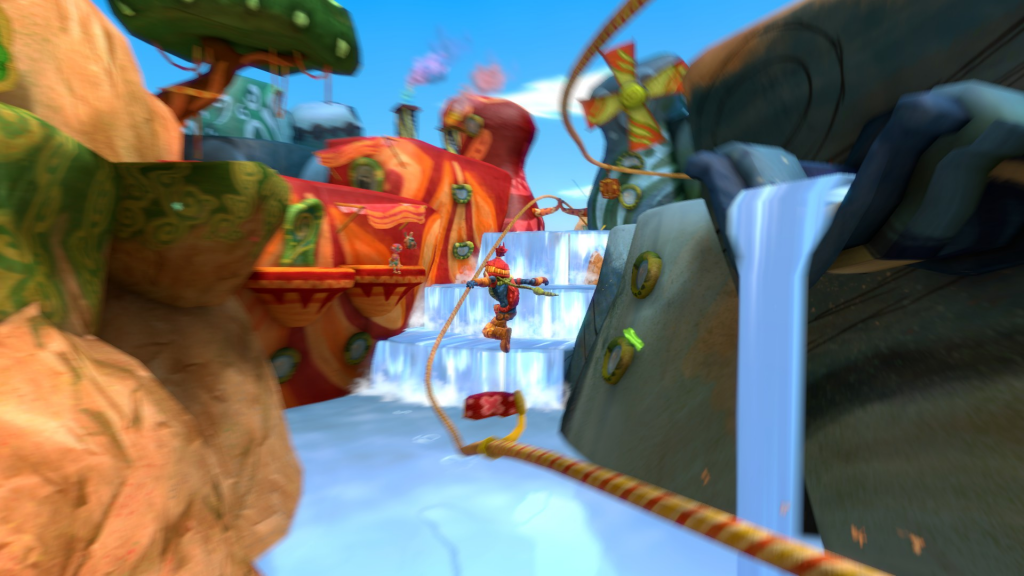
However, the same cannot be said of the game’s Ratchet and Clank inspired Rail sections. During these sections Koru is literally moving at a brisk pace but thanks to dodgy camera angles and awkward jumping controls they tend to break the flow of the game and swiftly descend in to an exercise in tedium as Koru crashes into life sapping obstacles, miss vital jumps, and flies head first into insta-kill clouds of bleakness.
This minor misstep aside, everything else about The Last Tinker is just fine and Dandy. Although admittedly it doesn’t do anything particularly innovative, the gameplay and presentation are incredibly competent and display a certain level of confidence and finess that many other budget titles lack, in the process creating a thoughtful fable that will appeal to gamers young and old alike.
In other words, it’s the kind of charming, vibrant adventure that will keep old bastards like me, away from the rummy bears for a few months and one that fans of platformers, both modern and old school should seriously consider adding to their collection.
-
